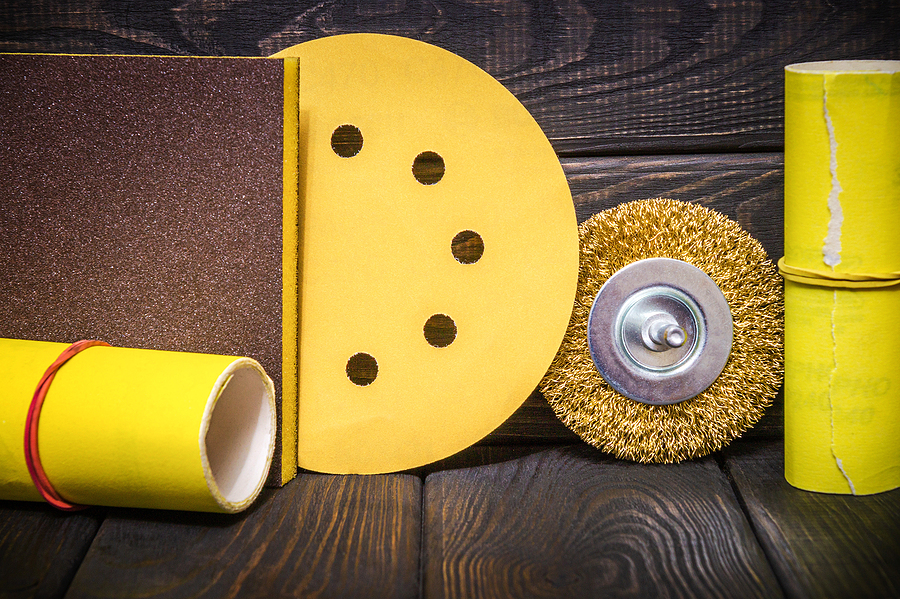Posted by Sandpaper America on Dec 28th 2022
10 Tips for Working with Abrasive Sandpapers
Sanding is one of the most important steps in any woodworking or home renovation project. Without sanding, you won’t be able to achieve a smooth finish and your work will look unfinished. But sanding can also be time consuming and tedious if you don’t have the right tools and techniques at your disposal. That’s where abrasive sandpapers come in—they allow you to quickly remove material from surfaces while providing an attractive finish that looks like it was done by hand.
Below are 10 tips for working with abrasive sandpapers so that you can get the job done faster and better!

Advice on How to Use Abrasives
Need to get a job done but don't know how to work with abrasive sandpapers? Here are 10 helpful tips that will make the process easier. From selecting the right papers for your project, preparing surfaces correctly and using proper techniques, you'll be an expert in no time! With these tricks up your sleeve, completing projects just got infinitely simpler.
1. Start with coarse grit sandpaper – The larger the grit number, the finer the abrasive particles. As a general rule, when starting out you should use a sandpaper grit between 40 and 80 grit to get rid of any large pieces of wood that need to be removed. This will help prepare your surface for finer sanding.
2. Be sure to sand in the same direction – To get a smooth finish, it is important to sand with the grain of the wood. This means that you should sand in long, even strokes that are parallel to the wood grain rather than across it.
3. Use lighter pressure when sanding edges – When sanding the edges of your project, be sure to use lighter pressure than you would when sanding the flat surfaces. This will help prevent your abrasive sandpaper from gouging or tearing the wood.
4. Consider a dust collection system – Sanding can create a lot of sawdust, which is why it’s important to have a good dust collection system in place. This can help keep your work area clean and make it easier to see the results of your sanding efforts.
5. Clean your surface regularly – After sanding, be sure to clean off any remaining sawdust or debris that may be left on the surface of your project. This will help ensure a smooth finish and help prevent sanding errors.
6. Don’t forget to use waterproof sandpaper – If you’re doing a project that will be exposed to moisture, such as building a boat or outdoor furniture, then make sure to choose waterproof sandpaper. This type of sandpaper won’t swell up when exposed to moisture and will help you avoid sanding errors.
7. Use a sanding block – When sanding corners and rounded edges, a sanding block can be very useful. This tool helps keep the abrasive paper flat against the surface and makes it easier to get into tight places.
8. Check for splinters – When sanding, be sure to check for splinters or rough spots in the wood. If you find any, use a sharp chisel or knife to remove them before continuing with your project.
9. Take breaks – Sanding is hard work and it’s important to take regular breaks so that you don’t get tired or overwork the same area. This will help ensure that you sand it evenly and don’t miss any areas.
10. Finish with a finer grit – After you’ve finished your initial sanding, switch to a finer grit sandpaper between 120 and 150 to create a smooth finish. This is especially important if you are going to be finishing with a clear coat or some paint.
Conclusion on Sandpaper Tips
Following these tips will help ensure that your sanding projects turn out looking smooth and professional. With the right abrasive paper, sanding blocks, and techniques, you’ll soon have surfaces that look like they were done by an expert! Good luck!
If you're in Indiana and searching for the highest quality sandpaper and abrasives, look no further.Call Sandpaper America to order high-quality woodworking products at affordable prices. We manufacture all of their sandpaper and abrasive products in-house, so you can trust their quality and dependability. We offer wolf heads, belts, rolls, sheets, discs, and much more!
Related Posts:
FAQS
About Sandpaper Abrasives
Which
Sandpaper Should I Use?
How
to Choose the Right Sandpaper Grit For Your Project

